We may receive a commission when you use our affiliate links. However, this does not impact our recommendations.
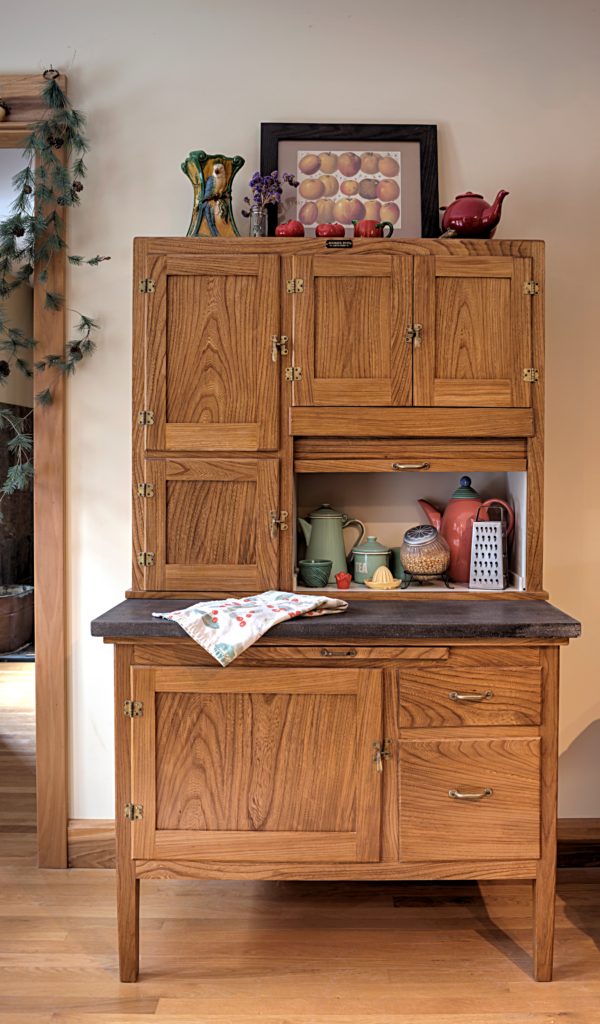
Hoosier 2010 made from salvaged elm. (Photo: Kendall Reeves, Spectrum Studio). The counter is limestone, which I colored to make it resemble slate or honed black granite.
People use the term salvaged to describe a variety of lumber. Salvaged lumber can be cut out of beams, joists, or other parts of buildings, whether remodeled or demolished. It can come from cabinets, furniture, packing crates, or other objects no longer in use. It can come from a tree felled by a bulldozer to make way for new construction or uprooted by a storm. Using material from any of these sources turns what would otherwise be viewed as trash into new products. Hence “salvage,” which comes from the Latin salvare, to save. (Yes, the same basic root as salvation.)
Whatever its origin, salvaged lumber presents a range of challenges to the woodworker – knots, splits, rot, embedded objects such as bullets, hooks, or bits of wire fencing – that are less commonly found in commercially sawn lumber from forest-grown logs. This post will cover a few examples of furniture built with salvaged lumber and discuss ways of dealing with those challenges.
1. Urban Lumber
Like some other municipalities concerned with avoiding waste, the City of Bloomington, Indiana operates an urban lumber recovery program. When a tree has to be felled for construction or because it poses a danger to vehicles or pedestrians, the urban forester’s staff evaluate its potential to be turned into lumber. If the tree makes the cut (ouch), it’s sawn and kiln dried, then made available to local woodworkers in exchange for a donation to the city’s tree fund or some object made from the lumber that the city can use.
I made the Hoosier cabinet shown above in 2009 using elm salvaged by this city program. The tree had been cut down to make way for construction.

Aerial view of the location where the elm tree grew. (Image by courtesy of City of Bloomington)
A few years later I built another Hoosier cabinet for our city’s cooperative grocery, using more of that elm from the same tree. To explain the extra work (and so, cost) of building with salvaged lumber compared to roughsawn lumber I would ordinarily buy from my regular supplier, I made up an illustrated booklet. For a primer on turning live-sawn lumber into flat, square boards, see my earlier post on the subject.

Beetle tracks are still visible on the wany edge from below the bark.

As with any live-sawn boards, those from this elm tree had to be cut to provide a straight edge, then surfaced on a jointer, etc. The blue chalk line here indicates where I would make my first cut.

This pair of boards offers an example of the kind of character you can expect in lumber that was not forest-grown. All such “defects” need to be cut around to produce boards of [what has, until the current appreciation of slabs, been known as] good quality.

When you purchase lumber from a commercial supplier, you can order different thicknesses, but when you’re using lumber that has already been sawn to a single thickness for an urban lumber recovery program, you have to laminate boards to create thicker stock, as I did for the legs of this Hoosier cabinet.
Morgan Holt, a reader of this blog, recently sent some pictures of a side table he made using some acacia milled from logs he picked up when an arborist in Phoenix was removing trees. The legs are ash.
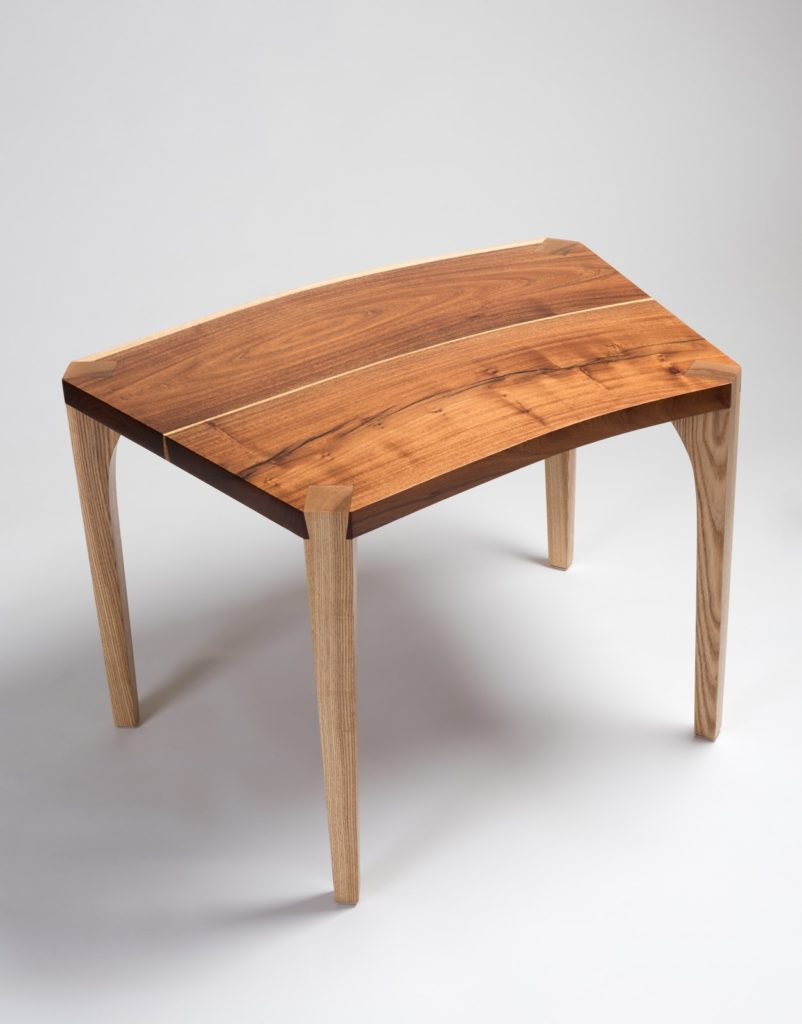
The side table Morgan made for some friends. (Photo: Daniel Friedman)
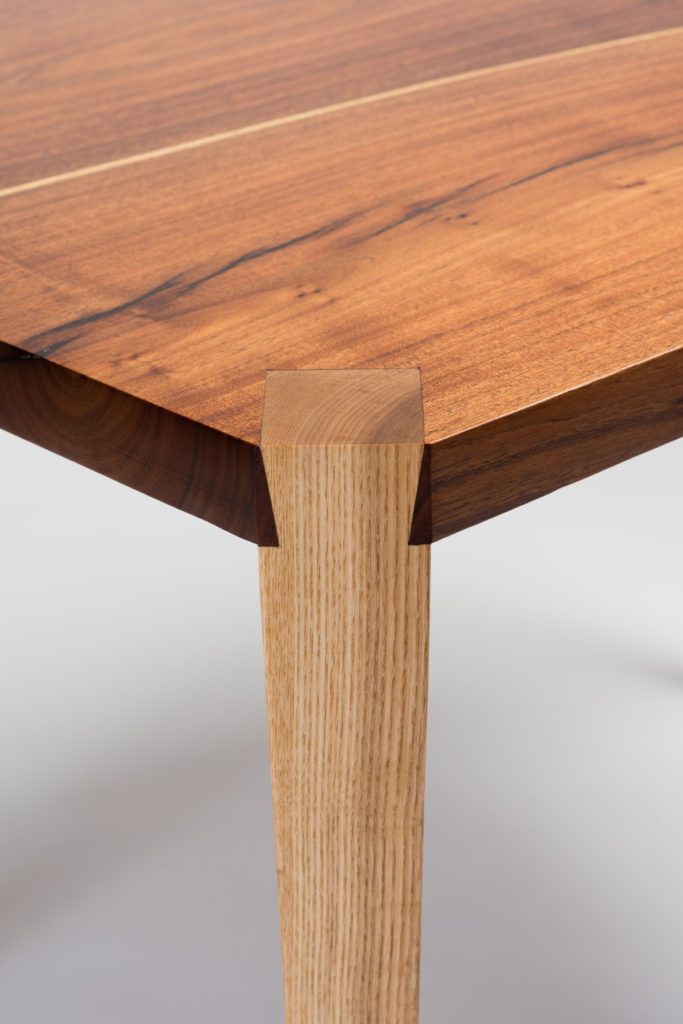
Detail of the joint between leg and top. (Photo: Daniel Friedman)
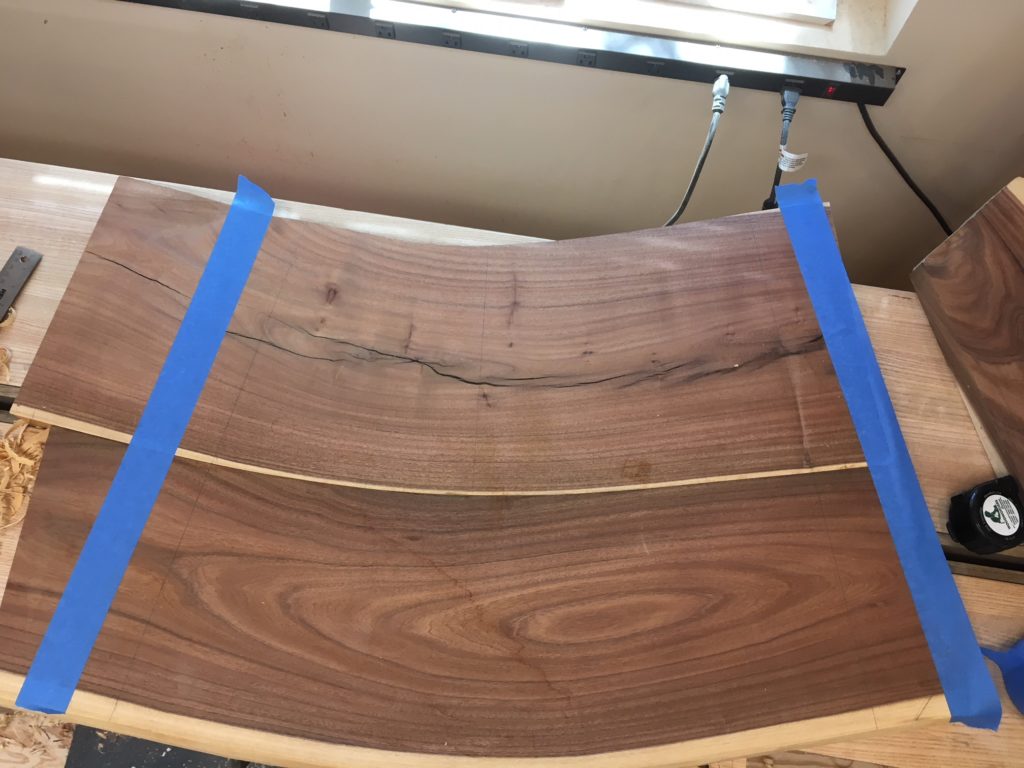
This process shot shows how Morgan cleverly used a strip of sapwood to decorative effect in the table top. (Photo: Morgan Holt)
Nice job of keeping that beautiful wood from being split for fires or chipped for mulch, Morgan!
2. Reclaimed Lumber
Lumber sourced from old buildings, furniture, etc. is usually referred to as reclaimed. Reclaimed lumber has incomparable character, bearing a history that new boards don’t (yet) have. For many years my mother had a dining table made from pine that had originally been a countertop in the operating room of the Wisbech hospital, near our home in Cambridgeshire. The TV in our house today sits on a simple table my husband built years ago out of oak siding from his century-old barn. Sometimes we know our lumber’s history, because it came from a building we personally knew, or because we bought from one of the reclaimed lumber businesses that keep records of their products’ provenance. In other cases, you may not know the specific history of your lumber, though the species, method of sawing, the presence of holes from fasteners, and other details can at least suggest rough clues.
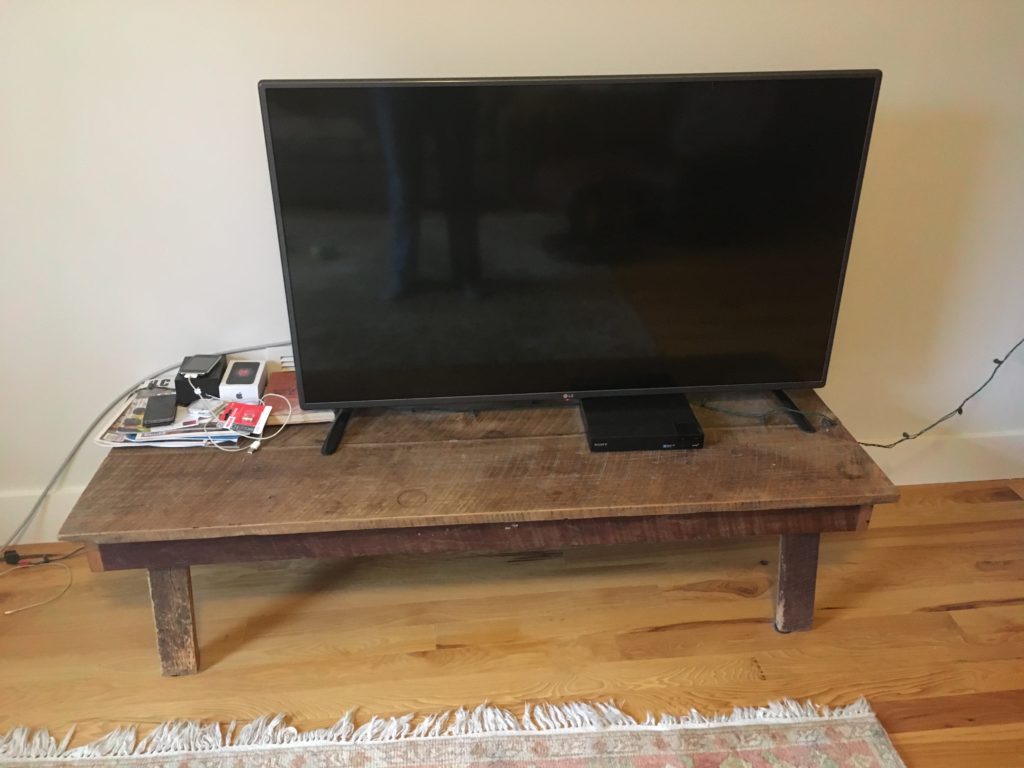
The crudely wrought yet lovable coffee table my husband built many years ago out of oak siding from his old barn. The barn is still there; this material came from a section of siding he removed to add a garage. (Mark is a highly competent carpenter-contractor, but when it comes to making stuff for his own use, well … “Done is good” becomes the rule.)
Another bonus of reclaimed lumber: Being from old buildings, it came from old-growth trees. Old-growth means tighter growth rings, which make for denser material as well as a visual character you just can’t get with commercially grown lumber. It also tends to be more stable, because it has already been through decades of seasonal movement.
Reclaimed lumber will be limited in terms of lengths, widths, and thicknesses – unless you contract with a company to have it sawn to your specifications. Companies sort this material according to size and the presence of knots, splits, etc. But given the contemporary embrace of what used to be called flaws and defects (we now call such things character), some companies also sort by the presence of staining and holes from fasteners – nails, bolts, etc. – knowing that some customers want those marks.
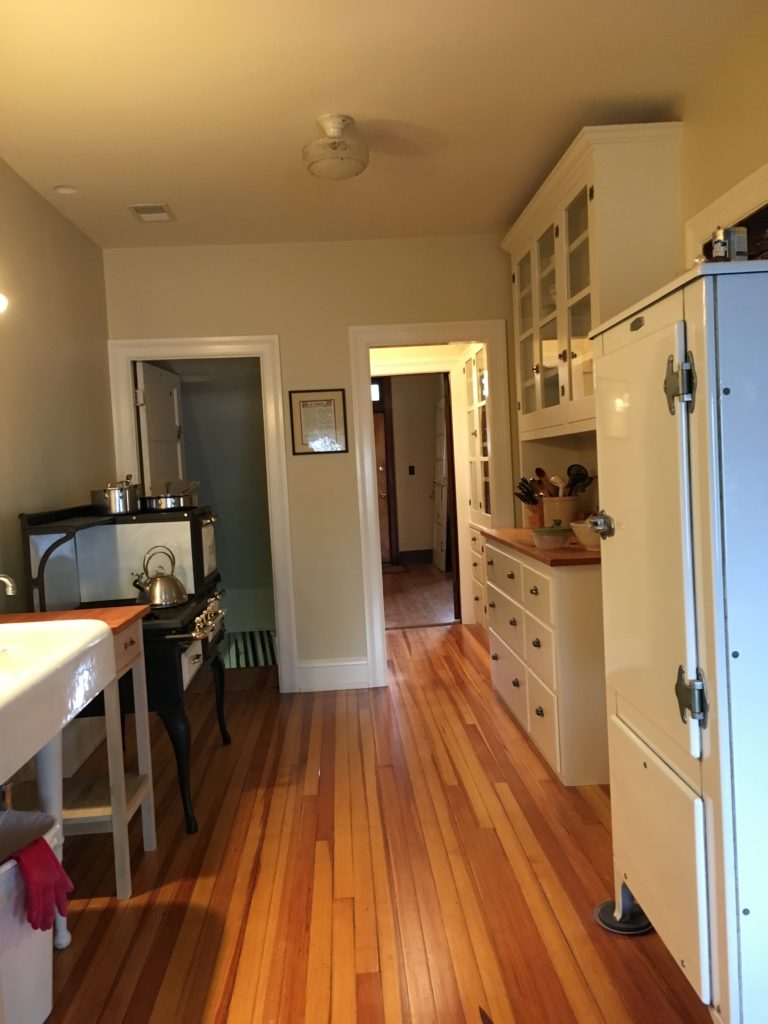
The counters on the built-in cabinet (right) and work table (left) in the kitchen of this 1917 house are made from salvaged fir from Goodwin Heart Pine. New commercially grown fir just can’t compete with the tight growth rings of reclaimed stock, which also has a richer color. Cabinetry and work table by NR Hiller Design, Inc.
Two companies that specialize in reclaimed lumber are Goodwin Heart Pine and Elmwood Reclaimed Timber. Many specialize in flooring, simply because floors require a lot of material, which helps offset the labor and other costs invested in obtaining, milling, and storing reclaimed wood. Some offer value-added products such as counters and table tops.
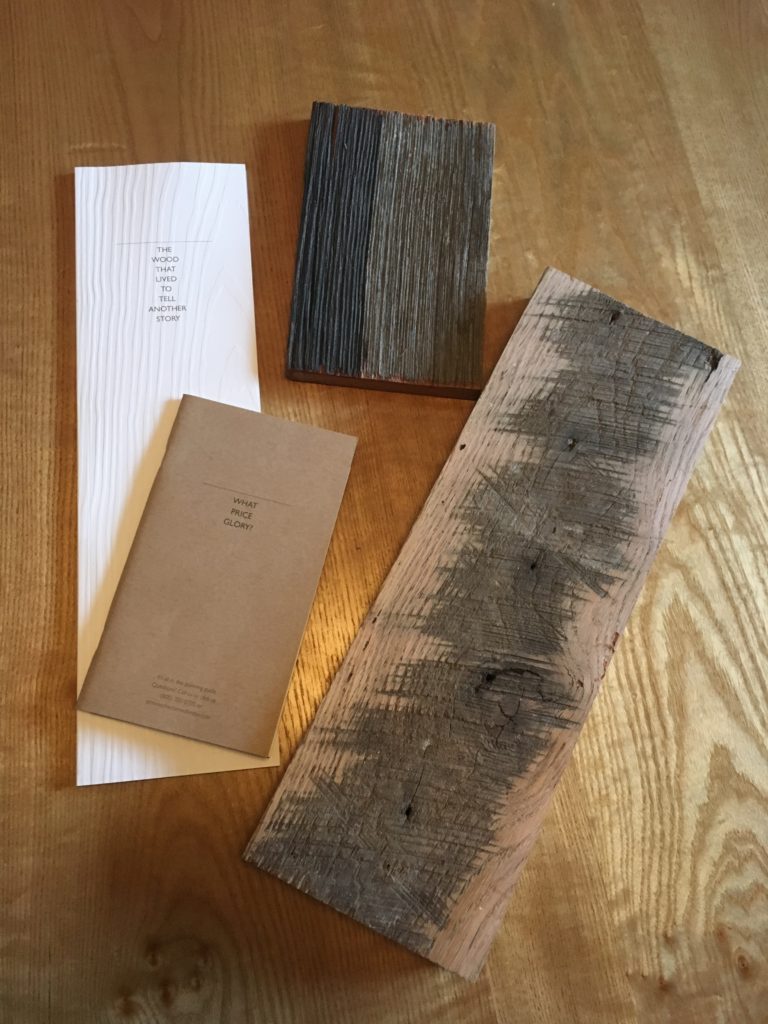
Marketing materials from Elmwood Reclaimed Lumber include a guide to provenance, a booklet of typical prices, and samples, in this case, gray barn siding (top; the left side has a coat of Osmo applied, to gauge the color change) and reclaimed oak.
As with any salvaged lumber, you will probably have to cut around defects depending on the look you (or your clients) are after. Another big consideration in reclaimed lumber, at least when bought commercially, is price. As an example, the “Rustic Grade” Douglas fir from Elmwood Lumber runs between $7 and $11 a square foot, excluding shipping and is graded to show
“more than 20 percent defects and blemishes. (That’s a good thing.) Variable knot, nail hole and heartwood characteristics.”–“What Price Glory?” Elmwood Lumber’s planning guide.
Having purchased reclaimed lumber for a few jobs where clients just couldn’t find anything else to match it, I can attest to its special character.
Next week: Part Two will deal with using lumber from back yard trees.
Itching to know more? Longing for inspiration in a coffee-table-worthy book? Keep your eyes open for news of Yoav Liberman’s book on using salvaged lumber, which will be published by Popular Woodworking. Although the book doesn’t yet have a title, Yoav is nearing completion of the manuscript. You can expect to hear more soon. If you’ve ever attended one of Yoav’s talks on this subject you’ll be as excited as I am about what’s coming.
Here are some supplies and tools we find essential in our everyday work around the shop. We may receive a commission from sales referred by our links; however, we have carefully selected these products for their usefulness and quality.








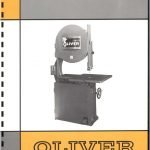

An album of my first salvaged wood furniture project, https://imgur.com/a/m5ow1. All I had was a table saw, lunchbox planer and hand tools. Used PW plans for a planer sled to substitute for a jointer. 200 year old tree, 2 free logs, $500 for portable sawmill, 1000 bd ft of 5/4 white oak.
Great article. My question is about salvaged fencing. The recent hurricanes here toppled my fence, lots of weathered 2×4, 4×4, even a couple of 6×6 and approx 100 5/8x5x72 cypress boards. Shame to trash them. Are they safe to use?
To me if you say salvage lumber that is what I think of——lumber that has been salvaged from a structure or other places such as used pallets. If it is new lumber made from trees I associate that with lumber made from salvaged tree. A matter of semantics but that is how I think of it.
Check out Angel City Lumber in LA; mentioned in Nick offerman’s “Good Clean Fun”, we paid a visit in March. http://www.angelcitylumber.com/what-we-do/.
Thanks for sharing my photos Nancy, and looking forward to your next blog about backyard trees!
Buying lumber at the local home center reminds me of buying Kraft American cheese slices; Its all been processed, cut to size and in some cases individually wrapped! Finding unprocessed lumber in wierd places is lots of fun.